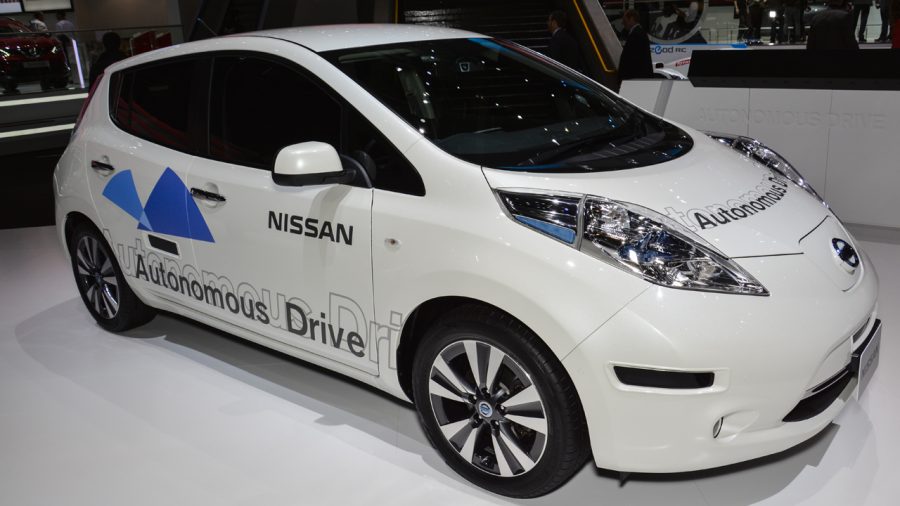The Future: 3D Printing + Driverless Cars
Today we revisit our glance into the technology of the future (Here’s the link to the first post in this “series”). In particular, we will be examining developments in 3-D Printing and Driverless Cars. Both of these technologies have made huge strides over the past few years and the future of both looks very promising.
3-D Printing:
3-D Printers are already widely available. In fact, CHS boasts multiple 3-D printers of its own. However, they continue to be mostly limited to commercial / educational institutions and have not found success in the general population. Despite the reductions in 3-D printer prices over the past few years, they continue to have a relatively small mainstream user base. While its possible to get a low-end 3-D printer for as cheap as $300, high-quality and reliable 3-D printers continue to be priced around $1000, which is not affordable to most Americans.
Another reason for the small user base is the “lack of usability” in most current 3-D printers. In particular, 3-D printers continue to have a relatively steep learning curve. The personal computer only catapulted in popularity once companies began simplifying machines so the average person was able to begin using one with little to no effort. A final problem with 3-D printers is that even to produce the smallest of figures they continue to be extremely time consuming. Once these problems are sorted out by companies within the 3-D printing industry expect to see 3-D printers achieve widespread popularity.
This is kinda of a side note, but it’s an interesting question about 3-D printers nonetheless. Basically the question is, “To what extent should the government be allowed to regulate 3-D printing technology?” For example, several people have 3-D printed functioning guns and other weapons. Should this be allowed or should limits be put in place? The Department of Homeland Security has been slowly cracking down on 3-D printing of guns as the government has increased regulation but it will be interesting nonetheless to see how the government’s perspective on 3-D printing evolves over time.
Driverless Cars:
Driverless Cars are an innovation that I am particularly excited for. The appeal of self-driving cars is that they could reduce the extremely high current car accident mortality rate. Major technology companies, in particular Google, have already made huge strides in driverless technology. Google’s self-driving car fleet has driven over 2 million miles across the United States.
These self-driving cars use a system of lasers, radars, cameras, and sensors to detect the surrounding environment. From this, the cars are also able to predict what will happen in the future and from that choose a particular plan of action. Initially, the company was simply adding their self-driving technology to preexisting cars such as the Prius and Lexus RX450h. However, more recently Google has announced a new self-driving prototype vehicle that they built from the ground up.
On the other hand, several states have cracked down on driverless cars and passed legislation restricting to use of driverless cars so the future of driverless cars continues to be extremely uncertain. Also, if driverless cars are successfully released, the U.S. transportation industry, which employs nearly 5 million Americans, could become obsolete. Thus, while driverless cars seem very exciting, there are some very scary possible consequences.
That’s all for now, expect to see the final post of this series covering reusable rockets and genetic engineering sometime in the near future!
Your donation will support the student journalists of Carmel High School - IN. Your contribution will allow us to purchase equipment and cover our annual website hosting costs.




























![Keep the New Gloves: Fighter Safety Is Non-Negotiable [opinion]](https://hilite.org/wp-content/uploads/2024/12/ufcglovescolumncover-1200x471.png)
















































![Review: “We Live in Time” leaves you wanting more [MUSE]](https://hilite.org/wp-content/uploads/2024/12/IMG_6358.jpg)
![Review: The premise of "Culinary Class Wars" is refreshingly unique and deserving of more attention [MUSE]](https://hilite.org/wp-content/uploads/2024/12/MUSE-class-wars-cover-2.png)
![Introducing: "The Muses Who Stole Christmas," a collection of reviews for you to follow through winter [MUSE]](https://hilite.org/wp-content/uploads/2024/12/winter-muse-4.gif)
![Review: "Meet Me Next Christmas" is a cheesy and predictable watch, but it was worth every minute [MUSE]](https://hilite.org/wp-content/uploads/2024/11/AAAAQVfRG2gwEuLhXTGm3856HuX2MTNs31Ok7fGgIVCoZbyeugVs1F4DZs-DgP0XadTDrnXHlbQo4DerjRXand9H1JKPM06cENmLl2RsINud2DMqIHzpXFS2n4zOkL3dr5m5i0nIVb3Cu3ataT_W2zGeDAJNd_E-1200x884.jpg)
![Review: "Gilmore Girls", the perfect fall show [MUSE]](https://hilite.org/wp-content/uploads/2024/11/gilmore-girls.png)
![Review in Print: Maripaz Villar brings a delightfully unique style to the world of WEBTOON [MUSE]](https://hilite.org/wp-content/uploads/2023/12/maripazcover-1200x960.jpg)
![Review: “The Sword of Kaigen” is a masterpiece [MUSE]](https://hilite.org/wp-content/uploads/2023/11/Screenshot-2023-11-26-201051.png)
![Review: Gateron Oil Kings, great linear switches, okay price [MUSE]](https://hilite.org/wp-content/uploads/2023/11/Screenshot-2023-11-26-200553.png)
![Review: “A Haunting in Venice” is a significant improvement from other Agatha Christie adaptations [MUSE]](https://hilite.org/wp-content/uploads/2023/11/e7ee2938a6d422669771bce6d8088521.jpg)
![Review: A Thanksgiving story from elementary school, still just as interesting [MUSE]](https://hilite.org/wp-content/uploads/2023/11/Screenshot-2023-11-26-195514-987x1200.png)
![Review: "When I Fly Towards You", cute, uplifting youth drama [MUSE]](https://hilite.org/wp-content/uploads/2023/09/When-I-Fly-Towards-You-Chinese-drama.png)
![Postcards from Muse: Hawaii Travel Diary [MUSE]](https://hilite.org/wp-content/uploads/2023/09/My-project-1-1200x1200.jpg)
![Review: "Ladybug & Cat Noir: The Movie," departure from original show [MUSE]](https://hilite.org/wp-content/uploads/2023/09/Ladybug__Cat_Noir_-_The_Movie_poster.jpg)
![Review in Print: "Hidden Love" is the cute, uplifting drama everyone needs [MUSE]](https://hilite.org/wp-content/uploads/2023/09/hiddenlovecover-e1693597208225-1030x1200.png)
![Review in Print: "Heartstopper" is the heartwarming queer romance we all need [MUSE]](https://hilite.org/wp-content/uploads/2023/08/museheartstoppercover-1200x654.png)




![Review: “We Live in Time” leaves you wanting more [MUSE]](https://hilite.org/wp-content/uploads/2024/12/IMG_6358-468x600.jpg)
![Review: The premise of "Culinary Class Wars" is refreshingly unique and deserving of more attention [MUSE]](https://hilite.org/wp-content/uploads/2024/12/MUSE-class-wars-cover-2-600x395.png)
![Introducing: "The Muses Who Stole Christmas," a collection of reviews for you to follow through winter [MUSE]](https://hilite.org/wp-content/uploads/2024/12/winter-muse-4-600x300.gif)
![Review: "Meet Me Next Christmas" is a cheesy and predictable watch, but it was worth every minute [MUSE]](https://hilite.org/wp-content/uploads/2024/11/AAAAQVfRG2gwEuLhXTGm3856HuX2MTNs31Ok7fGgIVCoZbyeugVs1F4DZs-DgP0XadTDrnXHlbQo4DerjRXand9H1JKPM06cENmLl2RsINud2DMqIHzpXFS2n4zOkL3dr5m5i0nIVb3Cu3ataT_W2zGeDAJNd_E-600x442.jpg)
![Review: Season four of "Outer Banks" was a waste of my time and here’s why [MUSE]](https://hilite.org/wp-content/uploads/2024/11/obx4.jpg)
